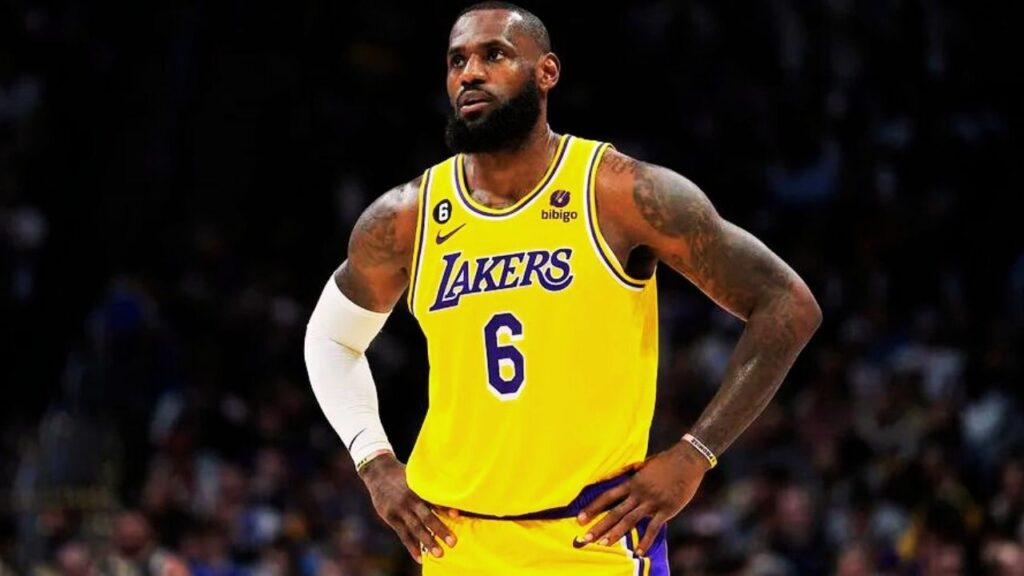Is Lebron James On Steroids? Based on the lack of concrete evidence, LeBron James is not conclusively proven to be on steroids.
The realm of professional sports often breeds speculation, and one enduring rumor revolves around LeBron James and the use of performance-enhancing drugs (PEDs).
With his remarkable physique and unparalleled longevity in basketball, questions arise. However, delving deeper into the facts reveals a different narrative.
Contents
LeBron’s Steroid Accusations
Over the years, LeBron James, hailed as one of the greatest basketball players of all time, has faced persistent accusations of steroid use.
These claims have often been amplified by figures like former MMA fighter Chael Sonnen, who has openly speculated about LeBron’s alleged reliance on performance-enhancing drugs.
However, it’s crucial to note that such assertions lack concrete evidence and are largely based on hearsay rather than verifiable proof. [Is Lebron James On Steroids?]
Despite Sonnen’s provocative statements, LeBron has never failed a drug test throughout his illustrious career, casting doubt on the validity of these allegations.
Exploring LeBron’s Physique
LeBron’s physical stature, characterized by his towering height and sculpted musculature, has been a subject of fascination and scrutiny alike.
While some attribute his remarkable physique to the use of steroids, a closer examination reveals a different narrative.
LeBron’s genetic predisposition for athleticism was evident from a young age when he first emerged as a prodigious talent in high school basketball.
His natural athleticism, combined with years of disciplined training and conditioning, provides a plausible explanation for his imposing physical presence on the basketball court.

Dedication to Body Maintenance
LeBron James is renowned for his unwavering commitment to maintaining peak physical condition throughout his career.
Reports have surfaced indicating that he spares no expense in investing millions of dollars annually in his body’s upkeep. [Is Lebron James On Steroids?]
This substantial investment encompasses a comprehensive support system, including personal trainers, nutritionists, and state-of-the-art recovery technologies.
Such meticulous attention to detail underscores LeBron’s unwavering dedication to health and performance enhancement through legitimate and ethical means.
Training Regimen and Diet
LeBron’s training regimen is meticulously crafted to optimize his performance on the basketball court. [Is Lebron James On Steroids?]
Emphasizing functional strength, flexibility, and agility, his workouts are tailored to meet the specific demands of professional basketball.
In tandem with his rigorous training, LeBron adheres to a disciplined dietary plan, rich in lean proteins, complex carbohydrates, and essential nutrients.
Additionally, he incorporates sports nutrition products like those offered by LADDER, co-owned by LeBron himself, to complement his dietary intake and support his rigorous training schedule.

Addressing Biogenesis Allegations
In 2023, LeBron James found himself entangled in the fallout of the Biogenesis Investigation, which implicated several athletes in the use of performance-enhancing drugs.
While LeBron’s name surfaced in connection with the scandal due to associations with individuals under investigation, subsequent inquiries yielded no evidence linking him to any illicit activities.
The mere coincidence of being in proximity to implicated individuals does not implicate LeBron in any wrongdoing, as confirmed by investigative findings.
Thus, the allegations surrounding LeBron’s involvement in the Biogenesis scandal remain unsubstantiated and inconclusive.
FAQs
How Did Lebron Gain Muscle?
LeBron’s physique stems from genetics and rigorous basketball-specific training, emphasizing functional movements and explosive power.
How Much Does Lebron Sleep A Day?
LeBron aims for 8 to 10 hours of sleep nightly, prioritizing rest for physical and mental recovery.
Who Is Lebron James’ Real Wife?
LeBron is married to Savannah James, formerly Savannah Brinson, embodying strength and support throughout his career.
Conclusion: Is Lebron James On Steroids?
In conclusion, the speculation surrounding LeBron James and steroid use lacks substantial evidence and fails to withstand scrutiny.
LeBron’s achievements in basketball stem from a combination of genetic gifts, relentless dedication, and adherence to ethical standards.
As fans, it’s crucial to appreciate his accomplishments within the realm of fair play and sportsmanship.

I’ve been a gym teacher for more than 12 years. Now, I have a small gym in Virginia. Some guys come to my gym, and I help them. In my free time, I like to learn about my favorite bodybuilders. So, I decided to make a blog about them.

